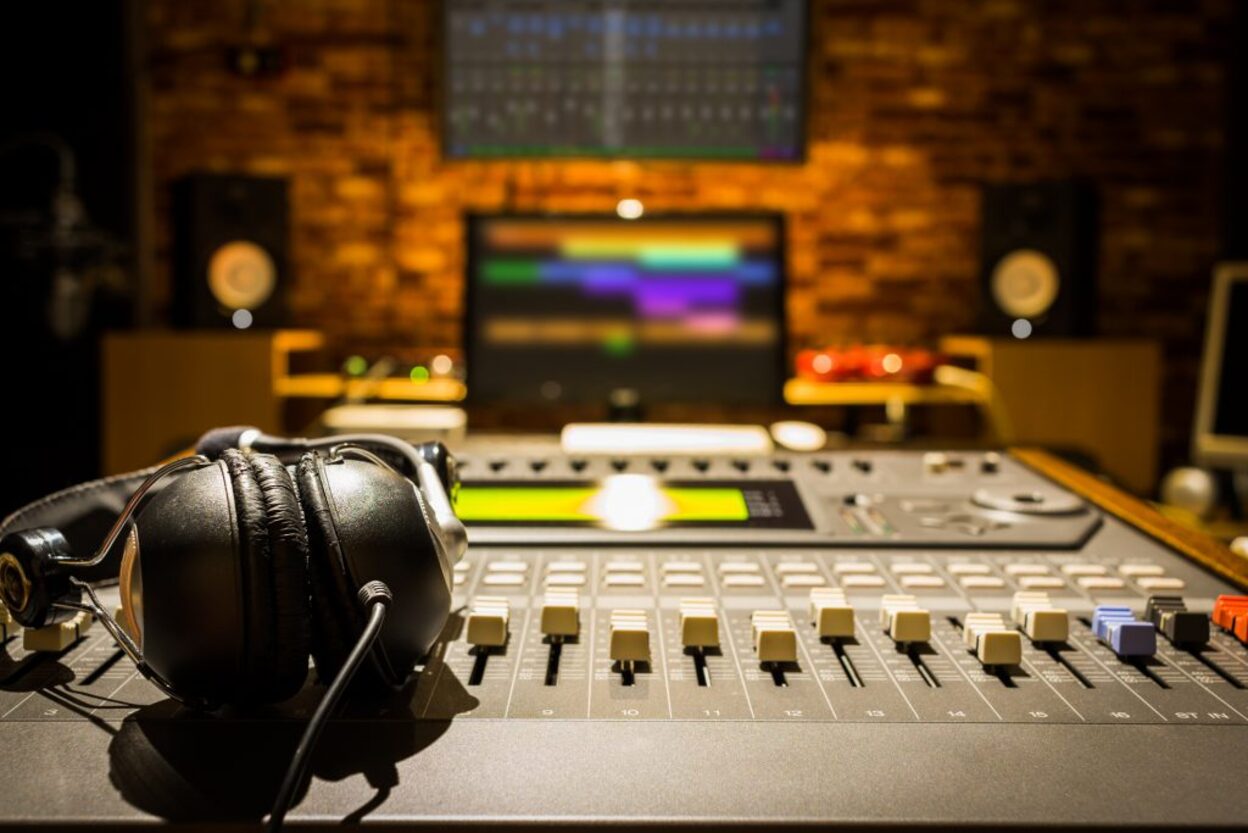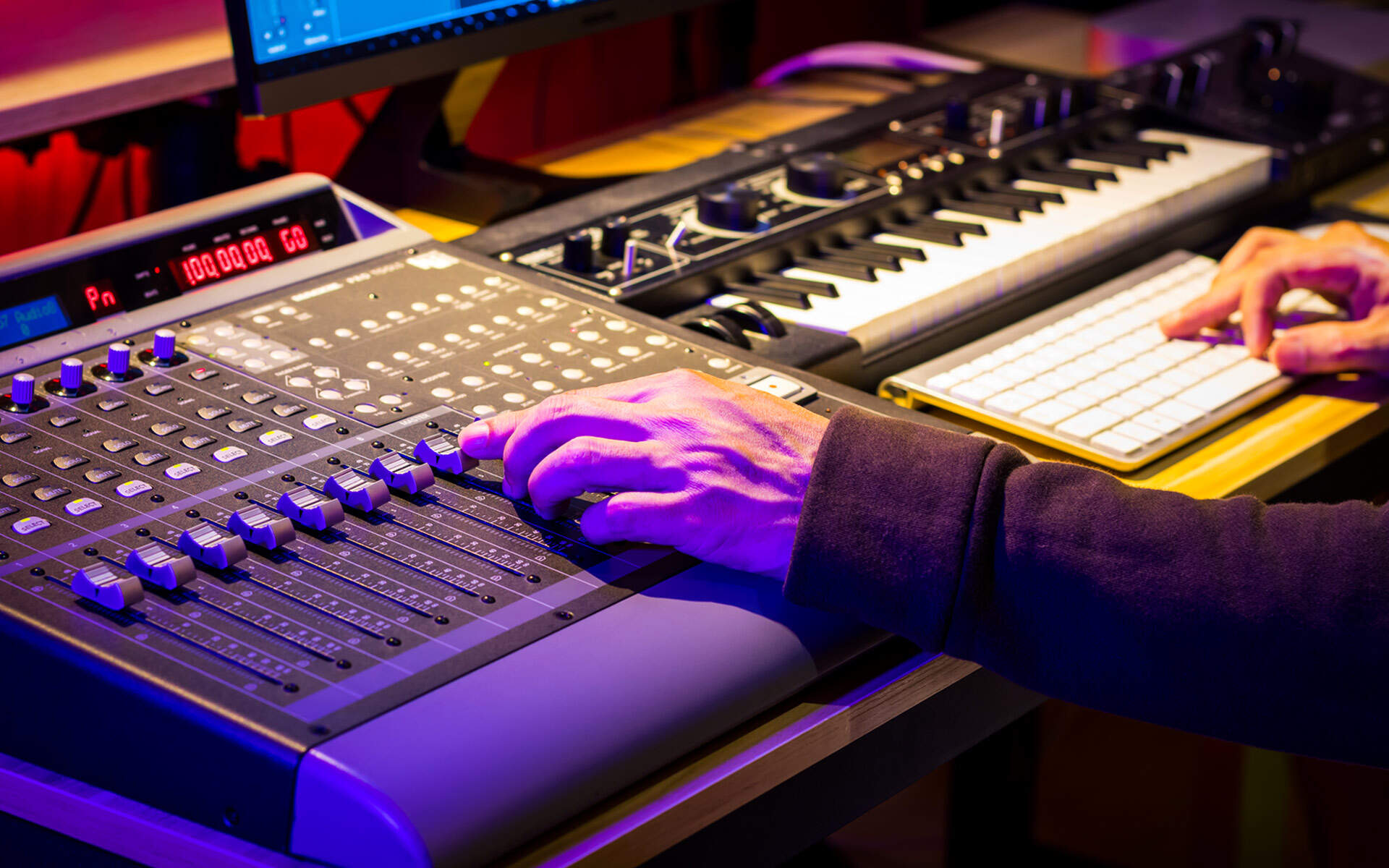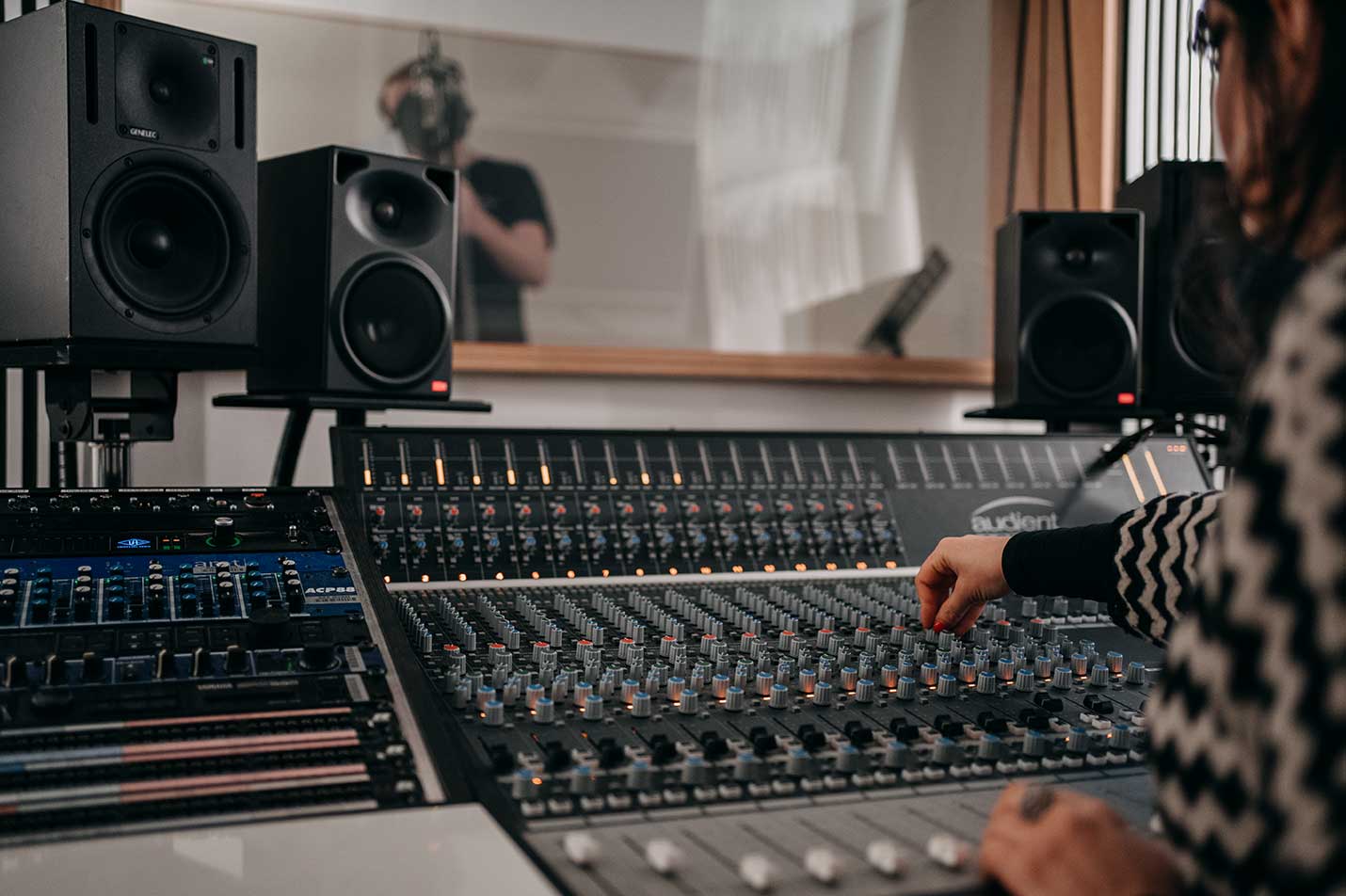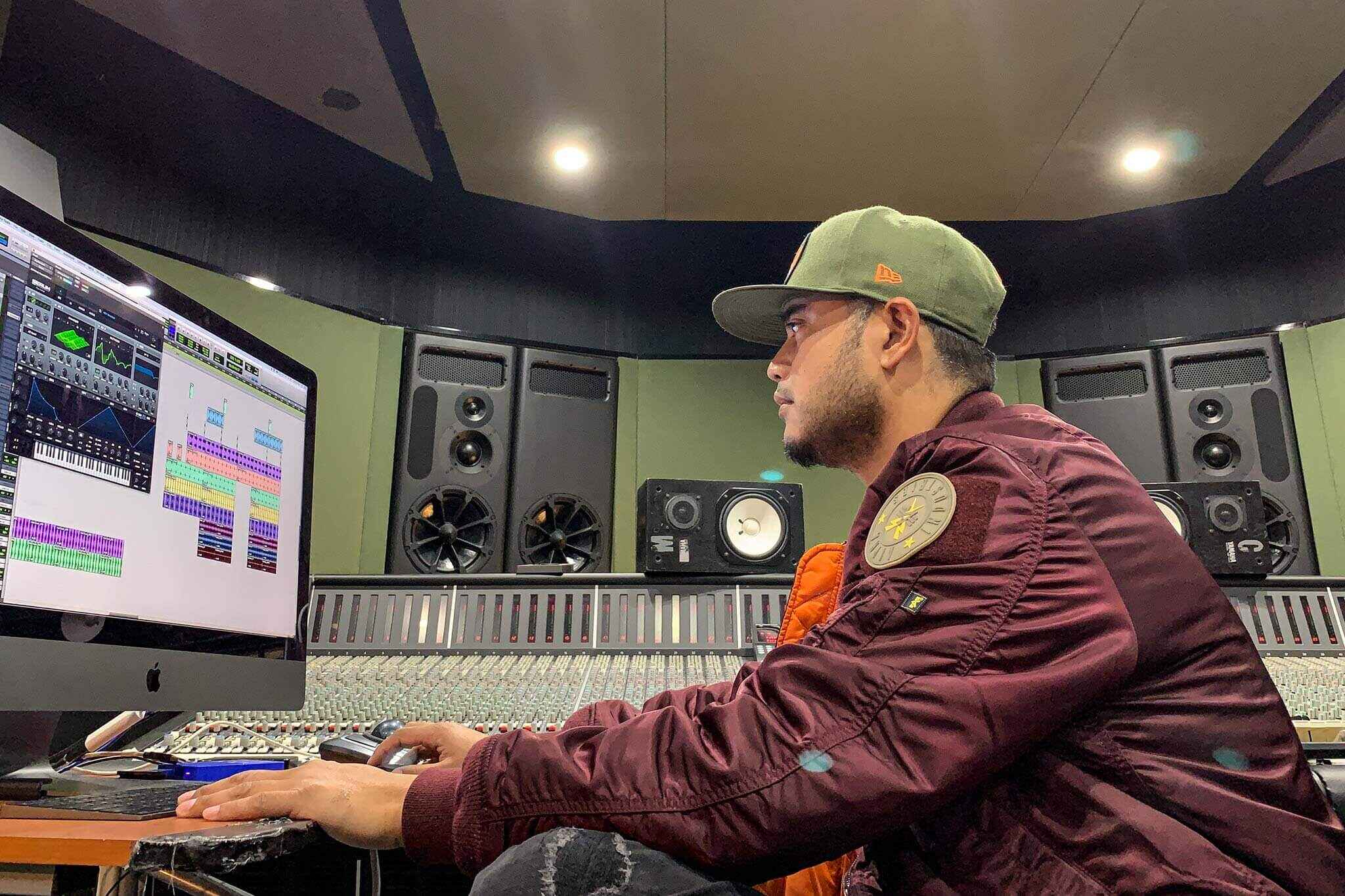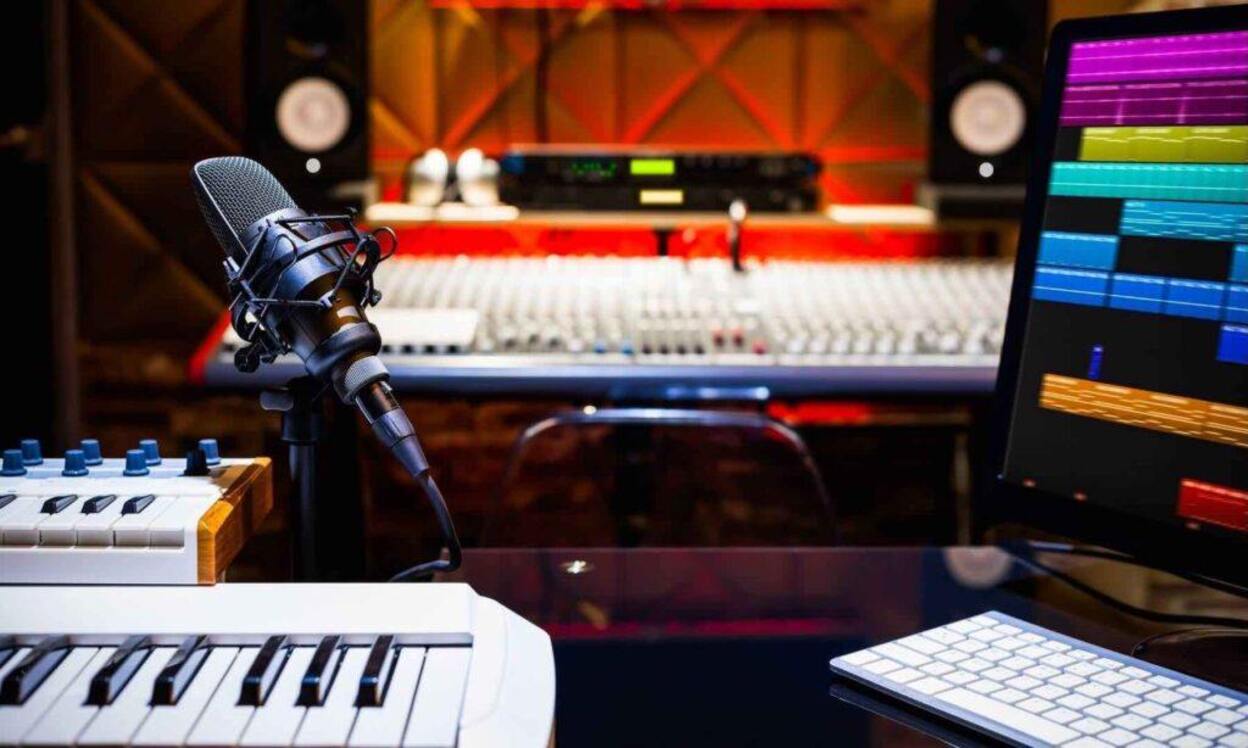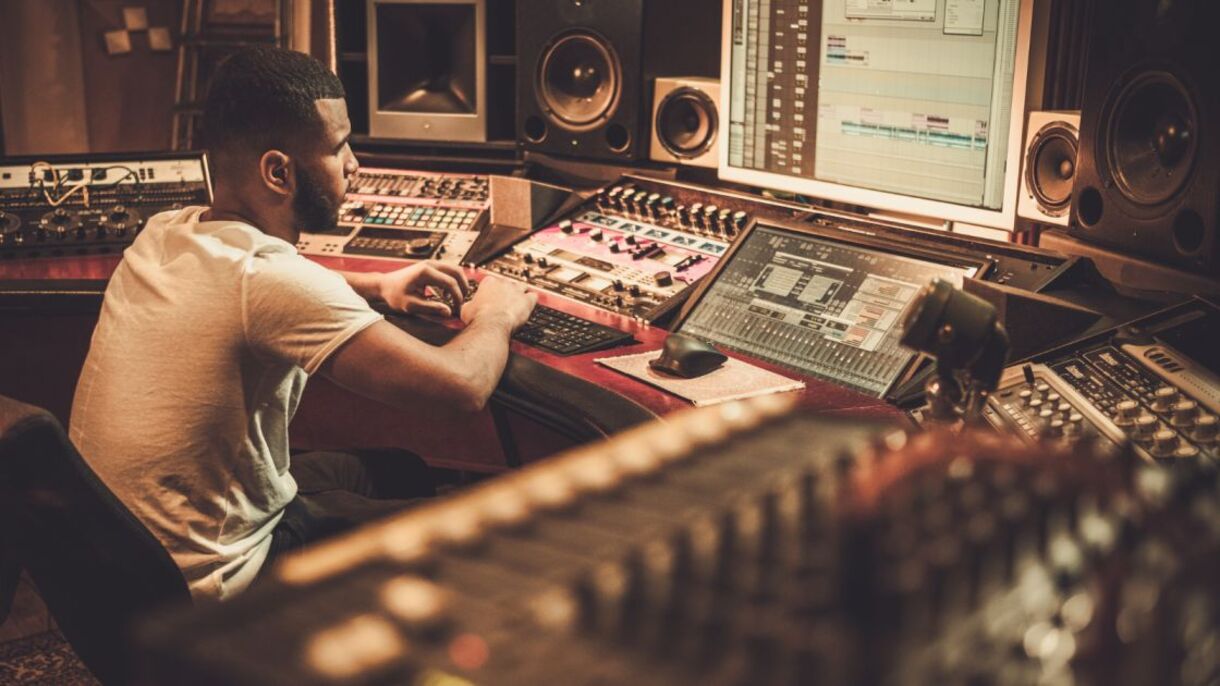Home>Production & Technology>Producer>How To Collaborate With Another Music Producer Easily
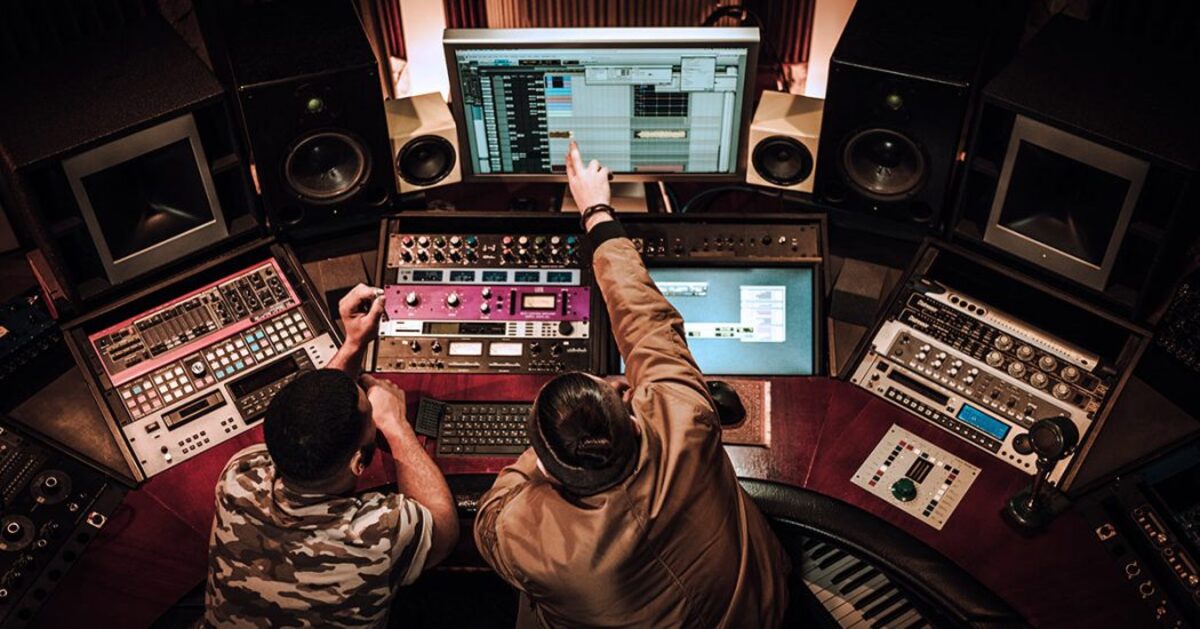

Producer
How To Collaborate With Another Music Producer Easily
Published: March 6, 2024
Learn how to collaborate with another music producer effortlessly. Discover effective tips and tools to streamline your collaborative projects.
(Many of the links in this article redirect to a specific reviewed product. Your purchase of these products through affiliate links helps to generate commission for AudioLover.com, at no extra cost. Learn more)
Table of Contents
Introduction
Collaboration is a powerful force in the music industry, enabling artists to combine their talents and create something truly extraordinary. When it comes to music production, working with another producer can open up a world of creative possibilities, allowing for the fusion of different styles, techniques, and perspectives. However, successful collaboration in music production requires more than just shared enthusiasm and talent; it demands effective communication, mutual respect, and a clear understanding of each other's roles and responsibilities.
In this article, we will explore the intricacies of collaborating with another music producer, offering valuable insights and practical tips to make the process seamless and rewarding. From finding the right collaborator to managing files and resolving conflicts, we will delve into the key aspects of productive collaboration in music production. Whether you are a seasoned producer looking to expand your creative horizons or a budding talent seeking to learn from others, the principles and strategies outlined in this article will serve as a valuable guide to navigating the collaborative landscape of music production.
By understanding the nuances of collaboration and embracing the potential for growth and innovation, music producers can forge meaningful partnerships that elevate their craft and resonate with audiences on a profound level. Let's embark on this journey to discover how to collaborate with another music producer easily and effectively, unlocking the boundless potential of collective creativity in the dynamic realm of music production.
Finding the Right Music Producer to Collaborate With
The process of finding the right music producer to collaborate with is a crucial step in embarking on a successful creative partnership. Whether you are seeking to complement your skills with a producer who possesses a different musical background or aiming to join forces with someone who shares your artistic vision, the selection process requires careful consideration and a keen understanding of your own goals and preferences.
1. Define Your Objectives
Before commencing the search for a collaborator, it is essential to define your objectives and identify the specific qualities and expertise you are seeking in a music producer. Consider the genre, style, and technical proficiency that align with your creative aspirations. Are you looking for a producer with a deep understanding of electronic music production, or do you require someone well-versed in live instrumentation and analog recording techniques? By outlining your objectives and musical preferences, you can narrow down the pool of potential collaborators and focus on individuals who are best suited to complement your artistic vision.
2. Research and Networking
Engage in thorough research and networking within the music production community to identify potential collaborators. Attend industry events, workshops, and music festivals to connect with fellow producers and explore opportunities for collaboration. Additionally, utilize online platforms and social media channels to expand your network and discover producers whose work resonates with your creative sensibilities. By immersing yourself in the music production landscape and actively seeking out like-minded individuals, you can increase the likelihood of finding a compatible collaborator who shares your passion for creating exceptional music.
3. Evaluate Compatibility and Chemistry
When evaluating potential collaborators, prioritize compatibility and chemistry in addition to technical proficiency. Arrange meetings or informal discussions to gauge the rapport and synergy between you and the prospective collaborator. Assess their communication style, openness to new ideas, and willingness to collaborate in a harmonious and respectful manner. Look for shared values, a mutual appreciation for each other's work, and a genuine enthusiasm for the prospect of collaborating on music projects. A strong personal connection and alignment of creative visions can lay the foundation for a fruitful and fulfilling collaboration.
4. Review Portfolio and Previous Work
Carefully review the portfolio and previous work of potential collaborators to gain insight into their artistic versatility, production techniques, and creative ingenuity. Listen to their past projects, examine their approach to sound design, mixing, and arrangement, and assess the overall quality and coherence of their musical output. Pay attention to the diversity of their portfolio and their ability to adapt to different musical styles and genres, as this can indicate their potential to contribute meaningfully to a collaborative project.
5. Seek Recommendations and Referrals
Seek recommendations and referrals from trusted peers, industry professionals, and fellow musicians who have experience collaborating with producers. Personal endorsements and testimonials can provide valuable insights into a producer's work ethic, professionalism, and collaborative spirit. By leveraging the recommendations of individuals with firsthand experience, you can gain a deeper understanding of a potential collaborator's strengths, work ethic, and suitability for collaborative endeavors.
In summary, finding the right music producer to collaborate with involves a deliberate and thoughtful approach that encompasses defining objectives, conducting thorough research, evaluating compatibility, reviewing previous work, and seeking recommendations. By investing time and effort into the selection process, you can identify a collaborator who not only possesses the technical prowess and creative vision to enhance your music production endeavors but also embodies the qualities of a reliable, communicative, and collaborative partner.
Establishing Clear Communication and Expectations
Effective communication forms the cornerstone of successful collaboration in music production. When embarking on a collaborative endeavor with another music producer, establishing clear communication channels and aligning expectations is paramount to fostering a harmonious and productive working relationship.
1. Open Dialogue and Transparency
Initiating open dialogue and fostering transparency from the outset sets the stage for a collaborative partnership built on trust and mutual understanding. Clearly articulate your creative objectives, production preferences, and project timelines, and encourage your collaborator to do the same. By openly discussing individual strengths, limitations, and artistic aspirations, you can lay a solid foundation for effective communication and ensure that both parties are aligned in their vision for the collaborative project.
2. Define Roles and Responsibilities
Clearly delineate the roles and responsibilities of each collaborator to avoid ambiguity and minimize potential conflicts. Establishing a clear understanding of who will handle specific aspects of the production process, such as sound design, arrangement, mixing, or mastering, can streamline workflow and prevent misunderstandings. By assigning distinct roles based on each collaborator's strengths and expertise, you can optimize efficiency and leverage the unique contributions of each individual to elevate the quality of the final music production.
3. Utilize Project Management Tools
Incorporate project management tools and communication platforms to facilitate seamless collaboration and streamline the exchange of ideas and files. Utilizing cloud-based storage solutions, collaborative workspaces, and project management software can enhance workflow efficiency, enable real-time feedback, and ensure that both collaborators have access to the latest project developments. By leveraging these tools, you can maintain a centralized repository for project assets, track revisions, and coordinate tasks effectively, thereby fostering a cohesive and organized collaborative environment.
4. Establish Feedback Mechanisms
Create a framework for providing constructive feedback and soliciting input from each collaborator throughout the production process. Encourage open-mindedness and receptiveness to feedback, as this can lead to the refinement and enhancement of creative ideas. Establishing regular feedback sessions or utilizing shared feedback platforms can promote a culture of continuous improvement and enable both collaborators to contribute to the iterative evolution of the music production in a constructive and collaborative manner.
5. Clarity on Decision-Making
Clarify the decision-making process and establish protocols for resolving creative disagreements or diverging opinions. By delineating a structured approach to decision-making, such as utilizing voting systems, seeking external opinions, or designating specific areas of creative autonomy, you can mitigate potential conflicts and ensure that both collaborators feel empowered to contribute meaningfully to the decision-making process while respecting each other's artistic insights and preferences.
In essence, establishing clear communication and expectations in collaborative music production involves fostering open dialogue, defining roles, leveraging project management tools, establishing feedback mechanisms, and clarifying decision-making processes. By prioritizing transparent communication and aligning expectations from the onset, music producers can cultivate a collaborative environment that nurtures creativity, mutual respect, and seamless workflow integration, ultimately leading to the successful realization of their shared artistic vision.
Sharing Files and Project Management
Efficient sharing of files and effective project management are pivotal components of collaborative music production, ensuring seamless coordination, organization, and accessibility of project assets. As music producers embark on collaborative endeavors, the implementation of robust file-sharing mechanisms and streamlined project management practices becomes indispensable for optimizing workflow efficiency and preserving the integrity of creative assets.
1. Centralized File Repository
Establishing a centralized file repository, such as cloud-based storage platforms or dedicated project folders, serves as a fundamental pillar of effective file sharing in collaborative music production. By consolidating all project assets, including audio stems, MIDI files, session recordings, and reference materials, within a centralized repository, collaborators can access, review, and contribute to the project with ease, thereby minimizing the risk of version control discrepancies and ensuring a synchronized creative workflow.
2. Version Control and File Naming Conventions
Adhering to meticulous version control practices and implementing standardized file naming conventions is essential for maintaining organizational clarity and preserving the integrity of project iterations. By incorporating version control tools or adopting systematic file naming protocols, such as date-based prefixes or descriptive identifiers, collaborators can track the evolution of project components, identify the most recent iterations, and navigate the project landscape with precision, thereby mitigating confusion and optimizing collaborative efficiency.
3. Real-Time Collaboration Platforms
Leveraging real-time collaboration platforms and project management tools, such as digital audio workstations with collaborative features or dedicated project management software, empowers music producers to engage in synchronized creative exchanges and facilitate seamless interaction. These platforms enable concurrent editing, instant updates, and shared access to project elements, fostering a dynamic and interconnected collaborative environment that transcends geographical boundaries and temporal constraints, thereby amplifying the synergy and cohesion of collaborative efforts.
4. Clear Communication of File Updates
Establishing a clear and consistent communication framework for sharing file updates, revisions, and project milestones is imperative for maintaining transparency and ensuring that all collaborators remain informed and engaged. By employing communication channels, such as project update notifications, shared calendars, or dedicated messaging platforms, collaborators can stay abreast of project developments, align their contributions with the latest project iterations, and synchronize their creative input with the evolving trajectory of the music production, thereby fostering a harmonized and informed collaborative ecosystem.
5. File Transfer Security and Accessibility
Prioritizing file transfer security and accessibility is paramount to safeguarding intellectual property and preserving the confidentiality of project assets. Implementing secure file transfer protocols, encryption measures, and access control mechanisms ensures that sensitive project materials remain protected while enabling authorized collaborators to access and collaborate on project components seamlessly. By striking a balance between security and accessibility, music producers can fortify the integrity of their collaborative projects and instill confidence in the collaborative process.
In essence, sharing files and project management in collaborative music production necessitates the establishment of a centralized file repository, meticulous version control, utilization of real-time collaboration platforms, clear communication of file updates, and the prioritization of file transfer security and accessibility. By embracing these foundational principles and integrating them into their collaborative workflows, music producers can cultivate an environment of streamlined creativity, synchronized productivity, and harmonious collaboration, ultimately propelling their shared musical endeavors to new heights of innovation and artistry.
Maintaining Creative Control and Respect for Each Other's Ideas
Preserving creative control and fostering mutual respect for each other's ideas form the bedrock of a harmonious and productive collaborative partnership in music production. As music producers embark on joint endeavors, it is imperative to navigate the delicate balance between asserting creative autonomy and embracing the diverse perspectives and contributions of their collaborators.
1. Articulating Artistic Vision and Boundaries
Articulating and communicating individual artistic visions and creative boundaries from the outset of the collaboration lays the groundwork for maintaining creative control while honoring each other's artistic sensibilities. By openly discussing preferred musical styles, thematic elements, and overarching artistic objectives, collaborators can align their creative trajectories and establish a framework that respects the unique artistic identities of each participant.
2. Embracing Flexibility and Adaptability
While upholding creative control is essential, embracing flexibility and adaptability is equally crucial in the collaborative landscape. Recognizing the value of being receptive to new ideas, unconventional approaches, and innovative perspectives nurtures an environment where both collaborators feel empowered to contribute authentically while remaining open to the transformative potential of collaborative synergy.
3. Constructive Dialogue and Feedback
Engaging in constructive dialogue and fostering a culture of respectful feedback enables collaborators to navigate creative differences with empathy and understanding. By offering constructive criticism, acknowledging the merit of diverse viewpoints, and engaging in open-minded discussions, music producers can uphold their creative control while honoring the contributions and perspectives of their collaborators, ultimately enriching the collaborative process.
4. Leveraging Complementary Strengths
Acknowledging and leveraging each other's complementary strengths and expertise fosters a collaborative dynamic where creative control is harmoniously intertwined with the appreciation of diverse skill sets. By recognizing and valuing the unique contributions of each collaborator, music producers can harness the collective potential of their combined strengths, leading to a harmonized creative output that transcends individual capabilities.
5. Cultivating a Culture of Empowerment
Cultivating a culture of empowerment and inclusivity within the collaborative framework engenders an environment where creative control is upheld through the encouragement of individual expression and the celebration of diverse creative inputs. By fostering an atmosphere of mutual respect, trust, and empowerment, collaborators can navigate the complexities of creative control while nurturing an inclusive and supportive space for the realization of their collective artistic vision.
In essence, maintaining creative control and respecting each other's ideas in collaborative music production involves navigating the delicate equilibrium between individual autonomy and collective creativity. By articulating artistic vision, embracing flexibility, fostering constructive dialogue, leveraging complementary strengths, and cultivating a culture of empowerment, music producers can navigate the nuances of creative control and collaboration, fostering an environment where diverse perspectives converge to form a cohesive and compelling musical narrative.
Resolving Conflicts and Compromising
In the realm of collaborative music production, conflicts and creative divergences are inevitable occurrences that necessitate adept conflict resolution and the art of compromise. When music producers collaborate, they bring their unique artistic perspectives, preferences, and sensibilities to the table, which can lead to differing opinions and potential conflicts. Effectively navigating these challenges requires a delicate balance of diplomacy, open communication, and a willingness to compromise without compromising the integrity of the creative vision.
1. Constructive Dialogue and Active Listening
Resolving conflicts begins with engaging in constructive dialogue and actively listening to each other's perspectives. By creating a space for open, honest communication, collaborators can articulate their concerns, express their viewpoints, and gain a deeper understanding of the underlying motivations behind their creative choices. Active listening fosters empathy and allows collaborators to appreciate the nuances of each other's creative input, laying the groundwork for constructive conflict resolution.
2. Identifying Root Causes and Common Ground
When conflicts arise, it is essential to identify the root causes and seek common ground to bridge divergent viewpoints. By examining the underlying reasons for creative disagreements and exploring areas of shared artistic vision, collaborators can pinpoint the crux of the conflict and work towards finding mutually beneficial solutions. Identifying common ground serves as a unifying force that enables collaborators to transcend impasses and navigate conflicts with a shared commitment to the collaborative project's success.
3. Flexibility and Creative Solutions
Flexibility and a willingness to explore creative solutions are pivotal in resolving conflicts and fostering a spirit of compromise. Embracing alternative approaches, experimenting with hybrid ideas, and exploring uncharted creative territories can lead to innovative resolutions that harmonize conflicting perspectives. By infusing flexibility into the collaborative process, music producers can transcend impasses and arrive at solutions that honor the essence of each collaborator's creative input.
4. Embracing Compromise Without Sacrifice
Compromising in collaborative music production entails finding middle ground without sacrificing the integrity of the artistic vision. It involves striking a balance where both collaborators feel heard, respected, and validated in their creative contributions. Compromise should not dilute the authenticity of the music production but rather enhance it by integrating diverse perspectives and forging a cohesive synthesis of creative ideas.
5. Mediation and Conflict Resolution Strategies
In instances where conflicts persist, mediation and conflict resolution strategies can provide a structured framework for navigating impasses. Engaging in facilitated discussions, seeking the guidance of impartial third parties, or employing conflict resolution techniques can offer new insights and perspectives, leading to breakthroughs in resolving conflicts while preserving the collaborative spirit.
In essence, resolving conflicts and compromising in collaborative music production demands a nuanced approach that encompasses constructive dialogue, active listening, identification of common ground, flexibility, creative solutions, embracing compromise without sacrifice, and, when necessary, leveraging mediation and conflict resolution strategies. By embracing these principles, music producers can navigate conflicts with grace, preserve the integrity of their collaborative projects, and emerge from creative disagreements with newfound unity and artistic enrichment.
Conclusion
In the dynamic realm of music production, collaboration with another music producer presents a gateway to boundless creative possibilities, collective innovation, and the fusion of diverse artistic perspectives. As music producers navigate the intricacies of collaborative endeavors, they are tasked with embracing the principles of effective communication, mutual respect, and the art of compromise, all of which are essential for fostering a harmonious and productive collaborative environment.
The journey to collaboratively creating exceptional music begins with the meticulous process of finding the right music producer to align with one's creative vision. By defining objectives, conducting thorough research, evaluating compatibility, reviewing portfolios, and seeking recommendations, music producers can identify a collaborator whose expertise and artistic sensibilities complement their own, laying the groundwork for a synergistic partnership.
Establishing clear communication channels, defining roles and responsibilities, leveraging project management tools, and embracing feedback mechanisms are pivotal in navigating the collaborative landscape of music production. These practices not only streamline workflow efficiency but also cultivate an environment where ideas flow seamlessly, creative visions align, and mutual respect thrives.
Sharing files and effective project management form the backbone of collaborative music production, ensuring that project assets are organized, accessible, and synchronized. By embracing centralized file repositories, version control, real-time collaboration platforms, and secure file transfer measures, music producers can amplify the efficiency and cohesion of their collaborative efforts, propelling their shared projects towards fruition.
Maintaining creative control while respecting each other's ideas is a delicate balance that requires the articulation of artistic vision, flexibility, constructive dialogue, and the empowerment of each collaborator's strengths. By navigating the nuances of creative autonomy and collaborative synergy, music producers can foster an environment where diverse perspectives converge to form a unified and compelling musical narrative.
In navigating conflicts and embracing compromise, music producers are called to engage in constructive dialogue, identify common ground, explore creative solutions, and uphold the integrity of their artistic vision while seeking harmonious resolutions. By leveraging mediation and conflict resolution strategies when necessary, collaborators can transcend impasses and emerge with enriched creative perspectives that elevate the collaborative project.
In conclusion, the art of collaborating with another music producer is a multifaceted journey that demands a blend of technical proficiency, creative acumen, effective communication, and a spirit of collaboration. By embracing the principles and strategies outlined in this article, music producers can embark on collaborative endeavors with confidence, navigating the complexities of creative partnership to unlock the transformative power of collective creativity and shared artistic vision in the vibrant tapestry of music production.

